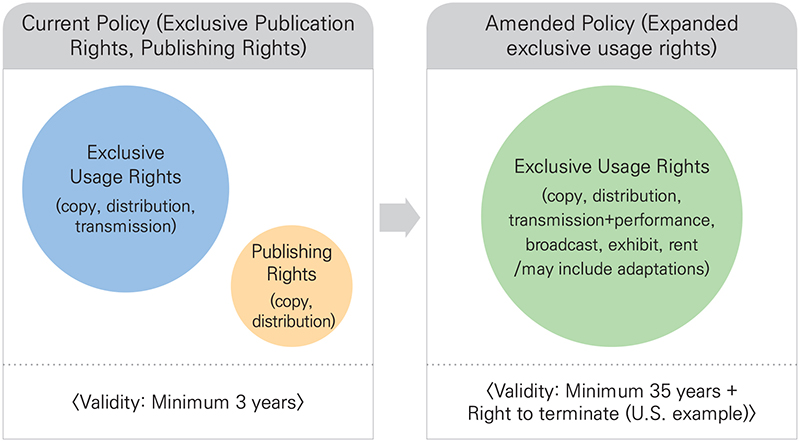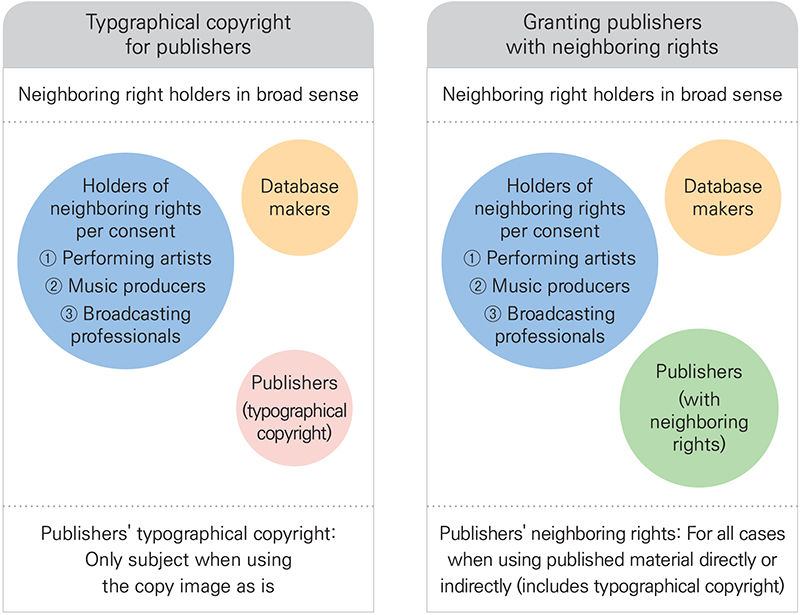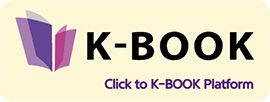|
Discussions on introducing typographical copyright
2019.11.04
1. Summary of typographical copyright
Typographical copyright refers to the proprietary publishing rights for typographical arrangements of published editions. Typographical copyright is being acknowledged as a type of neighboring right to protect the efforts and investments of publishers that play a key role in delivering published material through planning, providing authorship support, editing (setting layouts, proofreading and revising), designing and producing. Typographical copyright was first implemented to U.K. copyright law in 1956. Currently as of 2017, 26 countries around the world including Spain, Mexico, Australia, New Zealand and Ireland address typographical copyright in their copyright law. Elements like page style, the composition of the published work, layout and other physical features all fall under typographical copyright, and the publisher is the holder of that right. The lifetime of typographical copyright can last 25 years in 20 countries like the United Kingdom and up to 50 years in five countries including Mexico. In China, the right lasts up to a decade. In 20 countries like the United Kingdom, typographical copyright can only be used for specific publications like written works, while the remaining six countries do not have such limitations.
2. Discussions on the introduction and legalization of typographical copyright in South Korea
The bill was introduced to equally protect the rights of publishers who have invested in surface designs through typographical copyright.
The term 'typographical copyright' is thought to have been first used in South Korea in the December issue of Publishing Culture from the Korean Publishers Association in 1985. The term was used in a piece called 'Typographical Copyright as a Right for Publishers', translated from a Japanese publishing magazine. Afterwards, through the 1990s and 2000s, there were constant demands for the introduction of typographical copyright in regards to amendments to South Korea's copyright law. However, the demands could not be backed up with structured surveys and research at that time. In 2010 amid diverse discussions to increase electronic publishing, efforts were made to review typographical copyright. And in 2011, the Korean Publishers Association released an unprecedented report on the subject called “Research for the Introduction of Typographical Copyright” which offered comprehensive research results. The association also hosted a seminar on the paper. This, in turn, opened a new opportunity for typographical copyright to be used in South Korea, but no further accomplishments were made. In 2011, South Korea's publishing industry was faced with a more urgent task of establishing an official body for the promotion of published works (currently KPIPA), and after that it needed to resolve the issue of properly setting fixed rates for books. There was simply a lack of time to set aside interest for typographical copyright.
3. Two alternatives
The publishing industry considers the introduction of typographical copyright as an urgent task.
The reason why those in the publishing industry demand the introduction of typographical copyright is due to the perception that publishers' rights are not being fully protected due to current copyright laws or prevalent practices when it comes to publishing contracts. To protect the rights of publishers, expanding current efforts to implement typographical copyright is certainly one way, but the introduction of other policies may succeed in bringing about similar results or better. There are two alternatives.
(1) Exclusive publishing rights expanded to absorb publishing rights (alternative 1) The first alternative would be to expand the meaning of the current exclusive publishing right to something similar to what the United States has in terms of exclusive usage permission rights and combine publishing rights with this new policy. It has been seven years since the implementation of exclusive publishing rights, but the public is now accustomed to seeing digital publications and the policy even results in confusion at times regarding compensation collection and other issues. The combination of the two would be possible as there is no solid reason to manage online and offline publications separately at this point. Another fact to be considered is that if the scale of exclusive publishing rights are expanded and the lifetime of those rights are extended to 35 years to match policy in the United States, there would be no need to implement typographical copyright separately.
〈Picture 1〉 Comparison between current publishing rights, exclusive publishing rights
(2) Grant neighboring rights to publishers (alternative 2) Another alternative would be to grant neighboring rights to publishers. Once granted, publishers would enjoy the same rights as do performing artists, music producers and broadcasting professionals or database makers. This would enable publishers to copy, distribute and transmit published material. Mexico has the longest copyright protection period in the world, which is 100 years after the author's date of death. Mexico also acknowledges typographical copyright, as well as its neighboring copyright, and the lifetimes for these are 50 years post-publication. This alternative would grant a wider range of rights compared to the U.K. version of typographical copyright and would powerfully protect publishers. It would also complement any gaps or limitations typographical copyright policies may have, as some have pointed out there are limited upsides in right protection in typographical copyright for electronic publications.
〈Picture 2〉 Comparison between publishers' typographical copyright and implementation of neighboring rights
Although the publishing industry has addressed typographical copyright introduction as an urgent task, industry professionals are likely open to other alternatives. The main issue is there is an urgency at hand to implement a similar policy, whether it be typographical copyright, a policy for expanded exclusive usage rights or granting publishers neighboring rights.
Written by Park Ik-soon (Korean Publishing and Copyright Research Institute) Park Ik-soon (Korean Publishing and Copyright Research Institute) |
Pre Megazine
-

New Tarot Made With Korean Colors and Patterns!
VOL.69
2024.04 -

Please Look After Mom by Shin Kyung-sook
VOL.69
2024.04 -

Paper Play – A Great Way for Emotional Development, Concentration, and Creativity!
VOL.68
2024.03 -

Submit Us Your Reviews of Korean Books!
VOL.68
2024.03 -

A Miraculous Workout Routine for a Healthier Body!
VOL.67
2024.02 -

The Hottest Place in Korea, Right Here, Right Now!
VOL.66
2024.01 -

Kim Jiyoung, Born 1982 by Cho Nam-Joo
VOL.66
2024.01 -

Concerning My Daughter by Kim Hye-jin
VOL.65
2023.12 -

Bake Delicious Bread that’s Just Right for Your Taste
VOL.65
2023.12 -

Craft Your Own Special Miniature Furniture
VOL.64
2023.11 -

Take Beautiful Palace Tours With a Book
VOL.63
2023.10 -

A Guide to Beautiful Korean Handwriting
VOL.62
2023.09 -

An Offbeat Trip to Jeju Island
VOL.61
2023.08 -

Prepare for Disasters with a Single Book
VOL.60
2023.07 -

The Hen Who Dreamed She Could Fly by Hwang Sun-mi
VOL.60
2023.07 -

Feel the Street Vibes with Watercolor Painting
VOL.59
2023.06 -

Bone Soup by Kim Young-tak
VOL.59
2023.06 -

Eat Healthier and Tastier – Korean Vegan Food
VOL.58
2023.05 -

Almond by Won-pyung Sohn
VOL.58
2023.05 -

Learn About and Have Greater Fun Drinking Korean Alcohol!
VOL.57
2023.04 -

Knitting YouTuber Daeri Kim’s “Easy Modern Daily Knit”
VOL.56
2023.03 -

A New Section for Readers’ Reviews!
VOL.55
2023.02









